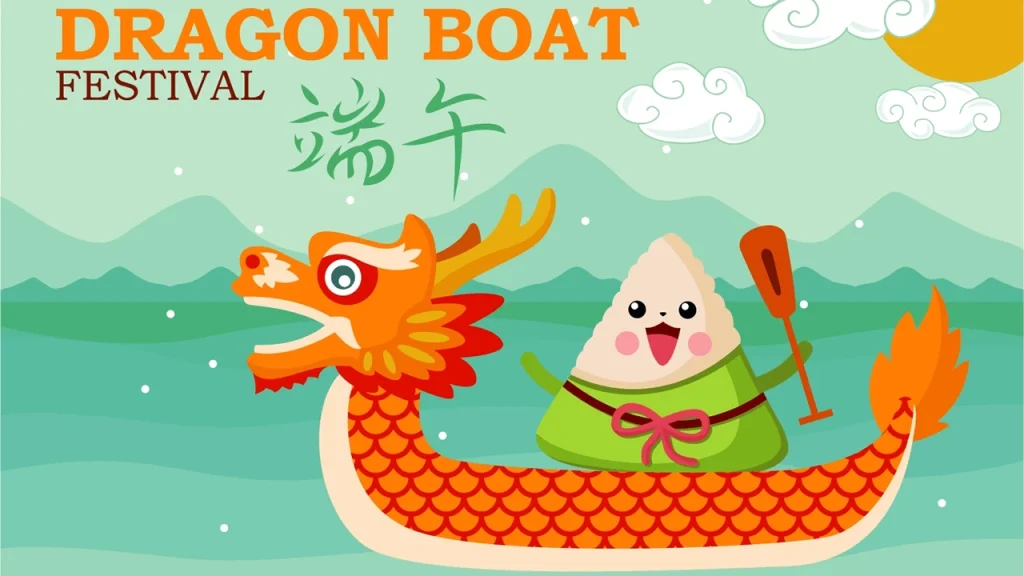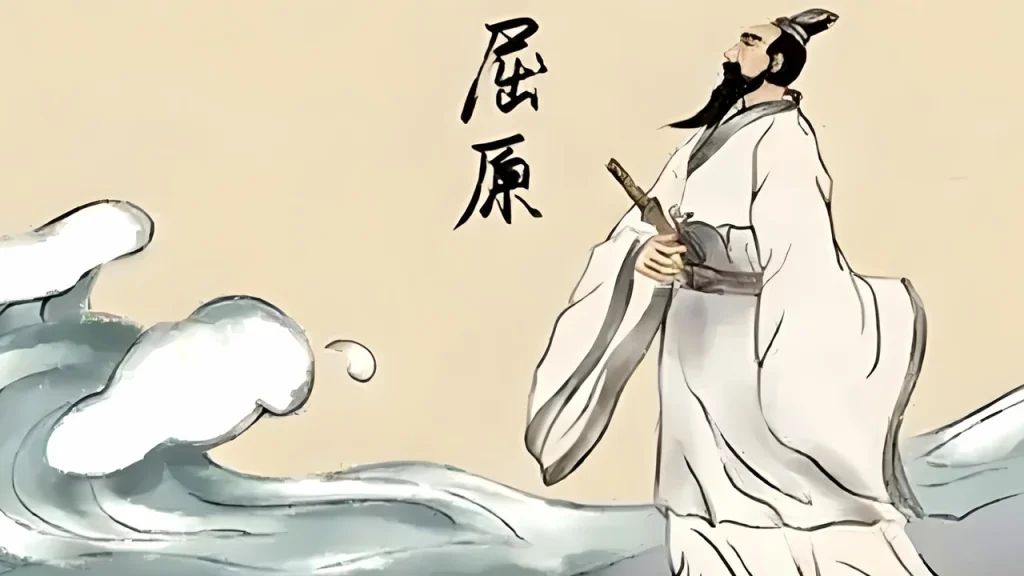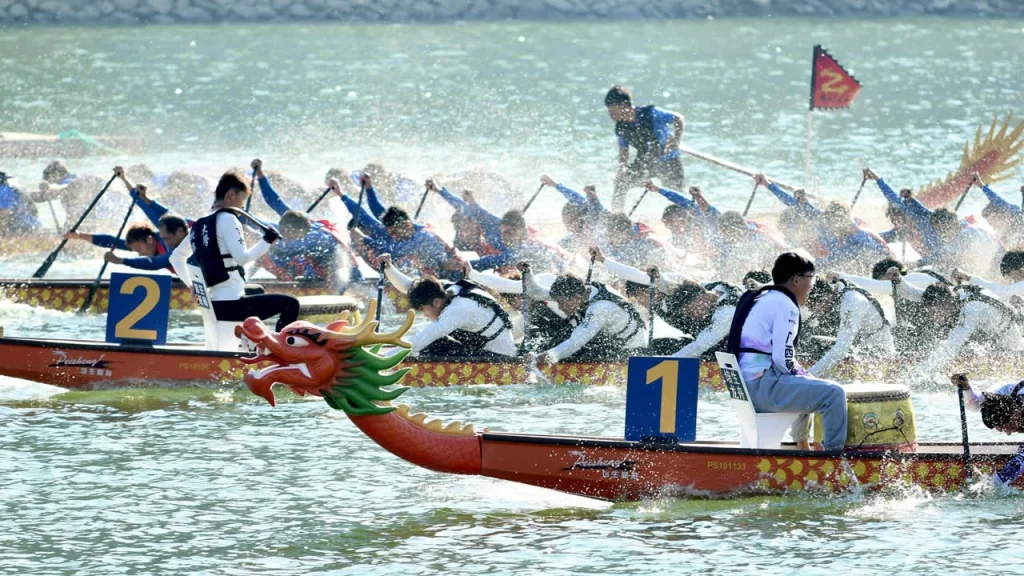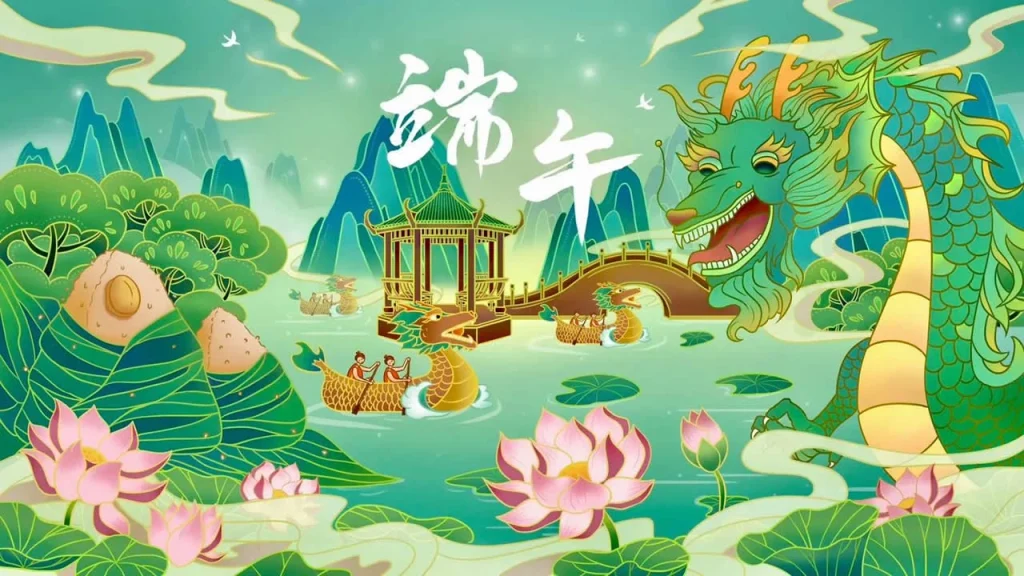Introduction: A Festival Flowing Through Time

On the fifth day of the fifth lunar month, when the fragrance of reed leaves permeates streets and the rhythmic beats of dragon boats reverberate across rivers, China celebrates the Dragon Boat Festival – a time-honored tradition steeped in ritual significance. This ancient festival, carrying over two millennia of history, serves not merely as a repository of collective memory but also as a testament to the Chinese nation’s profound understanding of nature, life, and cultural continuity. From the tragic drowning of Qu Yuan in the Miluo River to the hanging of mugwort above doorways, from the thunderous clamor of dragon boat races to the wistful wrapping of zongzi dumplings, the Dragon Boat Festival stands as a living archive of ethnic identity – constantly reinterpreted yet eternally preserved through the sands of time.
Chapter 1: Historical Origins: From Legend to Cultural Accumulation

- The Legend of Qu Yuan: A Patriot’s Elegy
The most widely recognized origin of the Dragon Boat Festival is deeply intertwined with Qu Yuan, a poet and statesman of the Chu State during the Warring States Period. In 278 BCE, upon hearing of the Qin army’s capture of Ying (Chu’s capital), Qu Yuan, consumed by despair, drowned himself in the Miluo River by embracing a boulder. Local fishermen rushed to his aid in boats, tossing rice dumplings into the river to prevent fish and shrimp from devouring his body. This legend, documented in historical texts such as Records of the Grand Historian and Songs of Chu, imbued the festival with profound patriotic significance, transforming it into a symbol of cultural heritage and national identity.
- Theories of Multiple Origins: A Cultural Mosaic in the River of History
Beyond the legend of Qu Yuan, the Dragon Boat Festival has absorbed elements linked to historical figures and nature worship:
- The Anniversary of Wu Zixu’s Death: During the Spring and Autumn Period, Wu Zixu, a statesman of the State of Wu, was executed and his body cast into the Qiantang River on the fifth day of the fifth month. To this day, customs commemorating him persist in the Suzhou region.
- Cao E’s Filial Piety: Cao E, a revered daughter of the Eastern Han Dynasty, drowned herself in search of her father’s remains. Her story became intertwined with the festival’s narrative.
- The Summer Solstice Theory: Observed near the summer solstice, the festival coincides with ancient beliefs that the fifth lunar month was a “malevolent month,” necessitating rituals to expel evil spirits and ward off toxins for health and well-being.
- Historical Evolution: From Ritual Offerings to Folk Celebrations
The customs of the Dragon Boat Festival were first documented in Records of Local Customs during the Han Dynasty. It became an official holiday during the Tang Dynasty, reached its zenith during the Song Dynasty, and by the Ming and Qing periods, stood alongside the Spring Festival and Mid-Autumn Festival as one of China’s “Three Major Festivals.” This evolution culminated in a rich cultural system that blended traditions from north and south, reflecting the festival’s enduring ability to adapt and incorporate diverse regional practices.
Chapter 2: Traditional Customs: Ritual Codes Transcending Time and Space

- Dragon Boat Racing: A Millennium-Long Dialogue of Speed and Passion
The dragon boat race stands as the festival’s most visually arresting tradition. Originating from ancient totemic worship of the dragon, it later evolved into a symbolic commemoration of Qu Yuan. From the Miluo River to the Pearl River Delta, from the water towns of Jiangnan to overseas Chinatowns, the thunderous beats of dragon boat drums resonate with the collective cultural memory of ethnic Chinese. Modern competitions have further integrated athleticism, transforming this ancient ritual into a bridge for international cultural exchange.
- Zongzi: A Culinary Tradition Passed Down Through Generations
The art of zongzi-making has evolved from ancient bamboo-tube rice to a diverse tapestry of flavors, with the “northern sweet vs. southern savory” debate reflecting regional identities. From Jiaxing’s meat-filled zongzi and Miluo’s alkaline-water dumplings to Guangdong’s pyramid-shaped steamed treats, each variety encapsulates local culinary wisdom. The ritual of wrapping zongzi – from the fragrance of reed leaves to the meticulous preparation of glutinous rice and fillings – creates a sensory experience that binds generations, embodying the Chinese concept of “gustatory nostalgia” that transcends geographical boundaries.
- Warding Off the Five Poisons: Ancients’ Survival Wisdom
The fifth lunar month was regarded as a “poisonous month” in traditional Chinese beliefs. Ancient rituals to expel venomous creatures and epidemics included hanging mugwort and calamus, wearing perfumed sachets, and drinking realgar wine. These practices embody ecological wisdom: mugwort’s aromatic oils repel insects, realgar wine has antiseptic properties, and the medicinal herbs in sachets offered disease prevention.
- Other Distinctive Customs
- Orchid-Scented Baths: Purifying body and spirit with baths infused with medicinal herbs
- Five-Color Silk Bracelets: Wrist adornments woven from green, red, white, black, and yellow threads symbolizing the balance of the Five Elements (Wǔ Xíng)
- Tiger-Forehead Ritual: Painting the character “王” (King) on children’s foreheads with realgar wine to invoke tiger-like protective energy against evil spirits
Chapter 3: Cultural Connotations: Decoding the Festival’s Deeper Significance
- The Philosophy of “Harmony Between Heaven and Humanity”
Observed during midsummer, the Dragon Boat Festival’s rituals – sacrifices, purifications, and dietary customs – reflect ancient efforts to achieve harmony between humanity and nature. This seasonal adaptability embodies the traditional Chinese cosmological principle of “unity between heaven and humanity,” where rituals serve as a bridge to align human activities with celestial rhythms.
- A Totem of Patriotic Spirit
Qu Yuan’s legacy, encapsulated in his verse “The journey ahead is long; I shall search high and low,” has transcended generations through this festival. From Wen Tianxiang’s “Let my patriotic fervor shine eternal in history” to modern revolutionaries’ national salvation efforts, the Dragon Boat Festival persists as a vessel for collective patriotic memory, continually reinterpreting its role in shaping national identity.
- Embodiment of Familial Ethics
Customs like zongzi-making, mugwort-hanging, and sachet-gifting serve as tangible expressions of kinship bonds. The festival acts as a cultural anchor, preserving family histories and transmitting ancestral values through shared labor and ritual. This intertwining of domestic practices with spiritual significance reflects the Chinese cultural psyche of “homeland-as-state,” where familial and national identities converge in seasonal celebrations.
Chapter 4: Modern Legacy: Revitalization Through Innovation
- Safeguarding Intangible Heritage: From Local Tradition to Global Recognition
In 2009, the Dragon Boat Festival became China’s first festival inscribed on UNESCO’s Representative List of the Intangible Cultural Heritage of Humanity. This designation has not only bolstered preservation efforts for traditional craftsmanship – such as dragon boat construction and zongzi-making techniques – but also elevated global awareness of the festival’s cultural significance.
- Creative Synergy: Bridging Tradition and Modernity
- Cultural and Creative Products: Jewelry shaped like zongzi, stationery featuring dragon boat motifs
- Digital Integration: Virtual dragon boat races, H5 interactive games with festival themes
- Cultural Tourism Fusion: The Miluo River International Dragon Boat Festival, Qu Yuan’s Hometown Cultural Week
- Global Reach: A Cultural Bond for Chinese Communities Worldwide
From Singapore’s “Dragon Boat Festival” to Canada’s “Toronto International Dragon Boat Race,” the festival serves as a vital cultural anchor for overseas Chinese communities. UNESCO data indicates that over 50 million people globally participate in Dragon Boat Festival-related activities, with events spanning six continents and 120 countries. This widespread celebration transforms the festival into a dynamic platform for intercultural dialogue, where ancient traditions meet modern globalization in a vibrant exchange of heritage and innovation.
Chapter 5: Conclusion: Marching Toward the Future Through Heritage

The Dragon Boat Festival stands as an enduring cultural river – carrying the weight of history while surging with the vitality of contemporary life. When we savor the aroma of zongzi, we taste not merely tradition but a reaffirmation of cultural identity; when our cheers echo across dragon boat races, we channel not only athletic fervor but the perpetuation of national spirit. Facing the tides of globalization, the festival embraces change with open arms, assimilating new cultural elements while radiating resilient vitality. As it navigates between tradition and innovation, this ancient festival will undoubtedly continue weaving cultural legends for the Chinese nation, carrying its heritage to broader global audiences in an eternal dialogue between past and future.

Leave a Reply